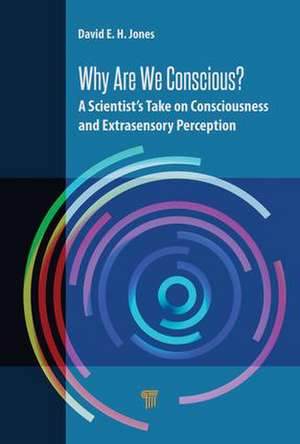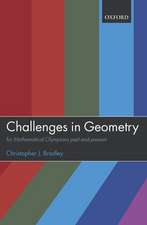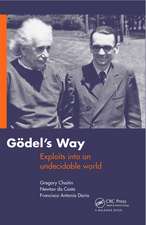Why Are We Conscious?: A Scientist’s Take on Consciousness and Extrasensory Perception
Autor David E.H. Jonesen Limba Engleză Hardback – 11 iul 2017
The book looks at the notion of the unconscious mind, one of the most important hypotheses of the twentieth century. Psychiatrists often deploy it rather informally, but there is no accepted theory of it. No region of the human brain seems to hold it. The author delves into the notion that the unknown world exists and is very weakly coupled to the physical world. He ponders the properties it may have to allow this coupling, looks at several paranormal effects scientifically and points out that many of them seem to imply brief but dramatic changes of the forces between atoms—a possible effect of the unknown world, unexamined by physical science.
No existing publication seeks to talk both about paranormal mysteries and scientific theory. If scientists know about the gaps in existing knowledge, they might initiate research into such gaps, or notice experimental oddities they now gloss over. If the general public was aware of the gaps in physical theory, they would be less overwhelmed by the intellectual diktats of some scientists.
Preț: 173.52 lei
Preț vechi: 208.66 lei
-17% Nou
Puncte Express: 260
Preț estimativ în valută:
33.20€ • 34.76$ • 27.47£
33.20€ • 34.76$ • 27.47£
Carte tipărită la comandă
Livrare economică 05-19 aprilie
Preluare comenzi: 021 569.72.76
Specificații
ISBN-13: 9789814774321
ISBN-10: 9814774324
Pagini: 268
Dimensiuni: 152 x 229 x 19 mm
Greutate: 0.5 kg
Ediția:1
Editura: Jenny Stanford Publishing
Colecția Jenny Stanford Publishing
ISBN-10: 9814774324
Pagini: 268
Dimensiuni: 152 x 229 x 19 mm
Greutate: 0.5 kg
Ediția:1
Editura: Jenny Stanford Publishing
Colecția Jenny Stanford Publishing
Public țintă
Academic and Professional Practice & DevelopmentCuprins
Introduction. The Physical World. Life and Its Information. The Unconscious Mind. Methods in Physical Science: Feelings Don’t Matter. Methods in Paranormal Science: Feelings Do Matter. The Physical Properties of the Unknown World Outside Our Diving Bell. Physical Effects of the Unconscious Mind and the Unknown World 1. Observed Effects of the Unconscious Mind and the Unknown World 2. Observed Effects of the Unconscious Mind and the Unknown World 3. Observed Effects of the Unconscious Mind and the Unknown World 4. Unscientific but Widespread Human Beliefs. Organizations and Unusual People Mediumship, the Societies for Psychical Research, and Star Guessers. Getting Information from the Unknown World by Insight and by Writing. Getting Information from AI. Technical Questions from AI. Concluding Remarks.
Notă biografică
David E. H. Jones is a British chemist and author, best known for his columns starting in the mid-1960s under the pen name Daedalus in New Scientist. He also continued to write for Nature and the Guardian for many years. He published two books with columns from these magazines, along with additional comments and implementation sketches: The Inventions of Daedalus: A Compendium of Plausible Schemes (1982) and The Further Inventions of Daedalus (1999). He has worked in academia, industry and television. Jones’s most notable scientific contribution as Daedalus is possibly his prediction of hollow carbon molecules before buckminsterfullerene was made, and long before its synthesizers won the Nobel Prize for the discovery of fullerenes. Beyond Daedalus, in scientific circles he is perhaps best known for his study of bicycle stability, his determination of arsenic in Napoleon’s wallpaper, and for having designed and flown an experiment to grow a chemical garden in microgravity. In 2009 a documentary film about his work and inventions, Perpetual Motion Machine, was made and shown at the Newcastle Science Festival, 2010.
Descriere
This book attempts to see whether the two worlds can be combined. Where the two worlds collide, science is often feeble and unsatisfying. It has nothing to say about the way that everyone is conscious and self-aware, and that many people see ghosts, communicate with spiritual entities, have psychic experiences, believe in a life before birth or after death, and so on. Few human minds are satisfied by a scientific and materialistic view of the world, and many people yearn for something beyond it. As a result, many strange beliefs survive, not in the public scientific world, but in the private mental one. This book rescues some of them by a guessed extension of physical science.















